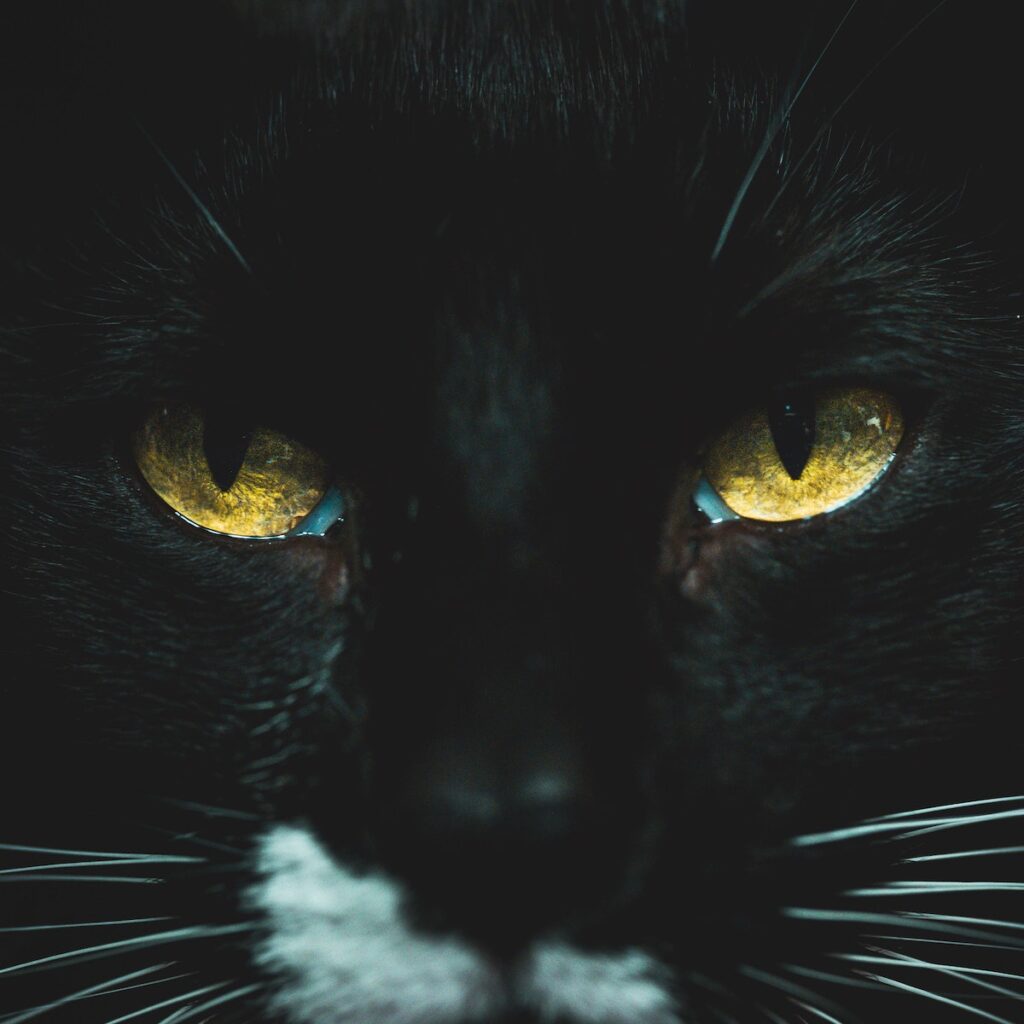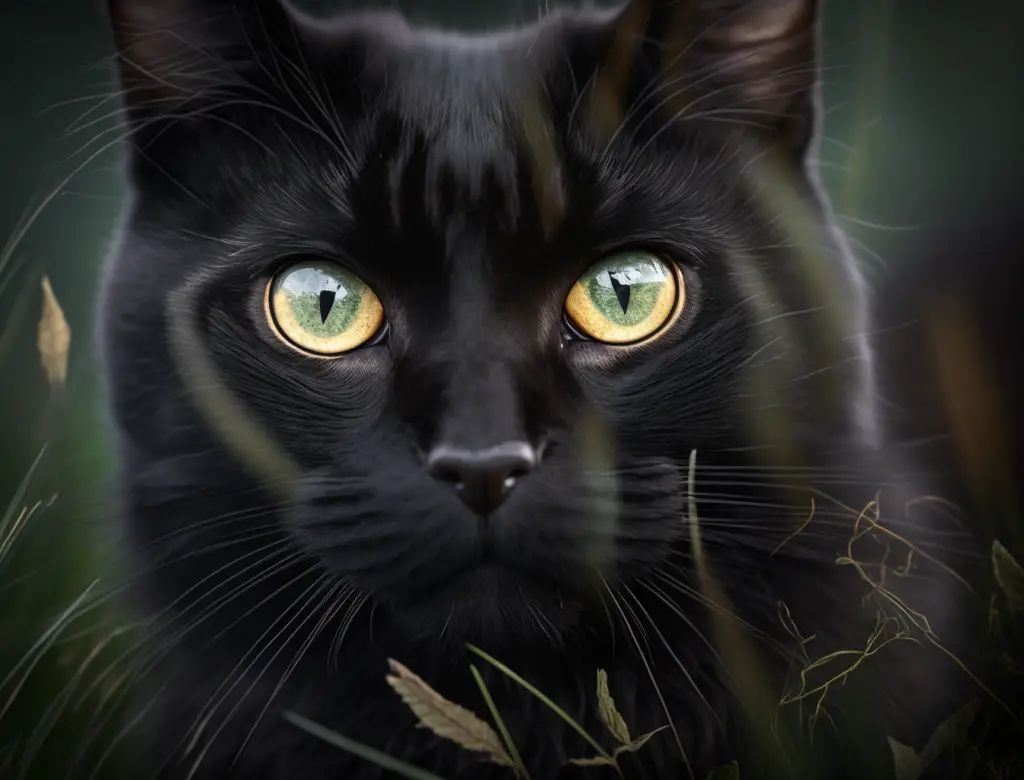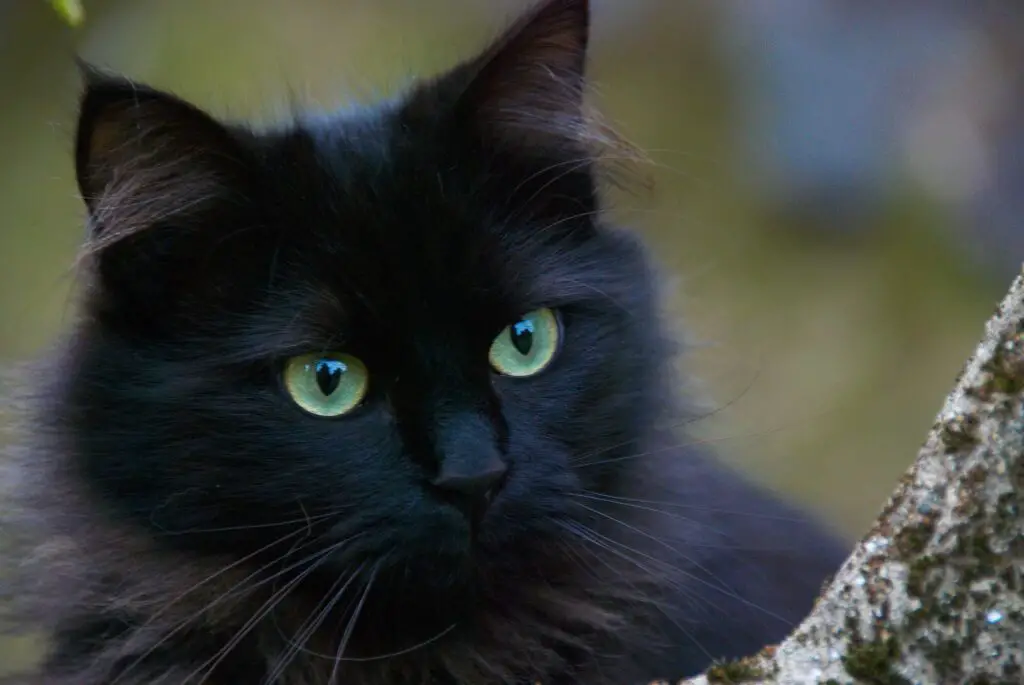
Black cats have captivating eyes that come in a variety of stunning colors. From bright yellow to glimmering green, the diverse range of eye shades can make it difficult for cat lovers to pick their favorite! But what causes these beautiful hues?
In this guide, we’ll delve into the science behind black cats’ gorgeous gaze and explore some common eye color variations. Get ready to marvel at the mesmerizing eyes of our feline friends!
Felines are known for their mysterious nature, with many attributing superstitious beliefs or magical powers to them. However, when it comes to understanding why they have such unique eye colors, there’s no mystery – just science! We’ll uncover the fascinating facts about which genetic traits determine a black cat’s eye color and how breeders can manipulate these factors.
So if you’re looking for an enchanting new companion, read on to discover all about captivating cat eyes!
Genetics Of Eye Color
Let’s talk about gene variations and melanin production when it comes to the genetics of eye color in black cats.
We’ll also discuss inherited traits, pigment expressions, chromosome alleles, genetic mutations, coat patterns, eye shape, kitten vision, vision disorders, breeding practices, cat breeds, cat health, eye diseases, and cat genetics.
Gene Variations
Are you curious about what color eyes black cats have?
Well, genetics plays a major role in determining eye color.
Different gene variations are responsible for the vast range of colors found in black cats – from blue to green, amber, and yellow.
The possibilities are endless!
These eye colors can either be solid or two-toned depending on the breed of cat and their genetic makeup.
No matter which gorgeous hue your feline friend has, a captivating gaze is sure to follow them wherever they go.
Melanin Production
So now that you know how genetics affects the eye color of black cats, let’s talk about what else comes into play.
Melanin production is a major factor in determining the hue of cat eyes. Darker fur colors are usually linked to higher levels of melanin, which results in darker shades such as brown or black.
Conversely, lighter-colored coats often have lower levels and can result in lighter hues like blue, yellow, or green for your black cat’s eyes.
So if you’re looking for a unique eye color on your kitty companion, be sure to keep an eye out for varying degrees of melanin!

Common Eye Colors In Black Cats
Have you ever seen a black cat with two different eye colors? It’s quite mesmerizing!
When it comes to the stunning range of eye colors in cats, black cats are no exception. Let’s explore the most common eye colors that can be found in these beautiful felines and why they appear so different from other breeds.
The majority of black cats have either gold, green or yellow eyes; however, there is also a variety of shades within each hue. Gold tends to be one of the most common eye colors for black cats, followed by green and then yellow. Interestingly enough, some cats may even possess more than one shade per eye – giving them an almost hypnotic stare.
No matter what color your kitty’s eyes happen to be, they’ll always hold a captivating gaze thanks to their unique characteristics.
Now let’s move on to discuss another interesting phenomenon that occurs when certain eye colors meet: The heterochromia effect!
The Heterochromia Effect
In the world of black cats, eye colors come in a wide array of stunning shades. From bright green to deep blue and even yellow, these furry felines can boast some of the most captivating gazes around.
However, with their striking appearances comes an interesting phenomenon known as Heterochromia. Heterochromia is when each iris has its own separate color, or one eye has two different colors within it. This effect can be found in both humans and animals alike; however, this trait is especially prominent in black cats.
While rarer than other eye colors among black cats, heterochromia can produce a unique look that many find quite attractive! Common combinations for these cats include gold/blue or orange/green eyes.
It’s important to note that while certain eye colors tend to appear more frequently among black cats – such as yellow, copper, and green – these can change over time due to diet or age-related changes. Understanding how the eyes of our feline friends may evolve over time helps us better appreciate them no matter what hue they eventually become!
As we’ll discuss further in the next section, these slight changes don’t make them any less beautiful – just another reminder of their ever-changing nature.

Color Changes Over Time
As a black cat’s gaze meets ours, it captivates us with its stunningly diverse eye colors. From the most common yellow and orange hues to striking shades of blue and green, each feline’s eyes are unique combinations that can sparkle in sunlight like precious gems.
Over time, however, these beautiful features may begin to fade or change color completely. Most cats have yellow-green colored irises when they’re very young, which then turn either yellow or orange by their adult years. Interestingly enough, some felines keep their baby blues even after they reach maturity – making them the envy of other cats!
The rarest eye color among black cats is a combination of both blue and yellow – often referred to as “odd-eye” due to its rarity. When this occurs in kittens, it tends to be an indicator of health issues later on in life.
This brings us to our next topic: health-related changes in a black cat’s eye color over time…
Health-Related Eye Color Changes
As we have seen, the eye color of black cats can range from vivid greens and blues to mysterious browns. However, those colors are not always permanent – they may change over time due to age or health-related issues.
In this section, let’s take a closer look at how these changes occur. One potential cause of an alteration in eye hue is simply age. As felines grow older their eyesight often begins to decline and with it comes a change in pigment. While some cats may go blind altogether, others will witness a gradual decrease in sight accompanied by an eventual discoloration of the iris. This phenomenon has been observed most commonly among senior kitties who are usually between 12-14 years old when it happens.
In addition to natural aging processes, there are medical conditions that can also contribute to color shifts within the eyes. Feline Herpes Virus (FHV), for example, is known to be linked with vision problems such as conjunctivitis which can lead to corneal opacity and ultimately impair vision even further. If left untreated, the virus can severely damage a cat’s eye tissue resulting in scarring and coloring alterations up until complete blindness occurs in some cases.
Therefore, if you wish your beloved pet to keep its captivating gaze then regular checkups must be made at least once every year so any abnormalities can be spotted early on before any irreversible damages take place.
Conclusion
In conclusion, the eye color of black cats is truly fascinating.
From the common colors to their unique and beautiful heterochromia effect, these cats have captivating gazes that will take your breath away.
As time passes, it’s possible for a cat’s eye color to change due to genetics or health issues – something we should all keep an eye out for.
With proper care and attention, we can ensure our feline friends always have stunning eyes!
Lee Harris
Latest posts by Lee Harris (see all)
- Homemade Cat Cookies: A Purr-fect Treat for Any Occasion - February 7, 2024
- Chic Feline Elegance: Crafting a Multi-Tiered Black Cat Cake - February 6, 2024
- Purr-fectly Delicious: Black Cat-Themed Donut Delight - February 5, 2024


